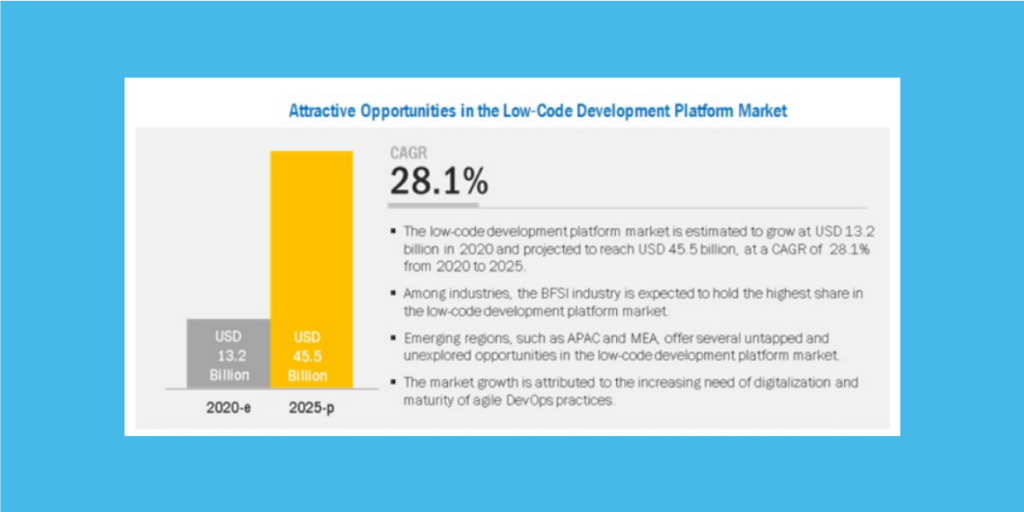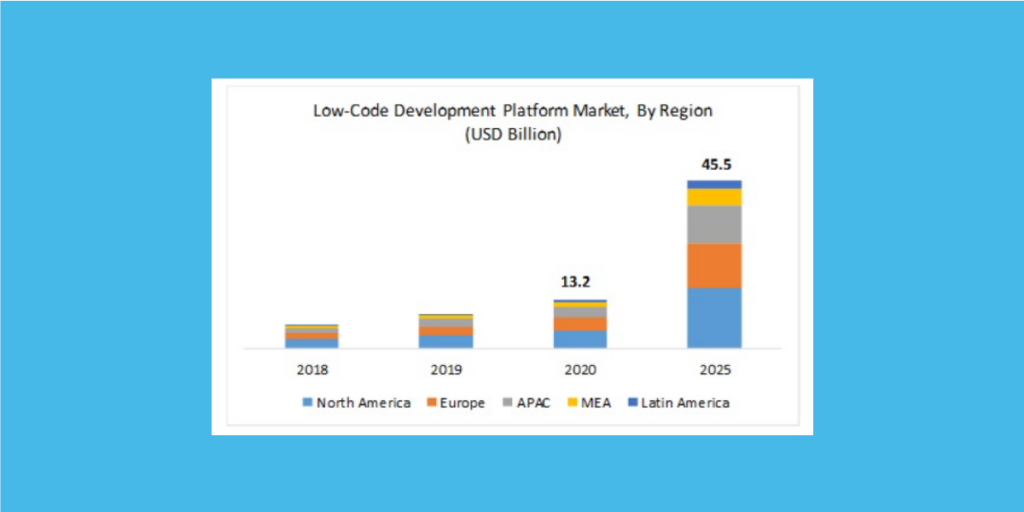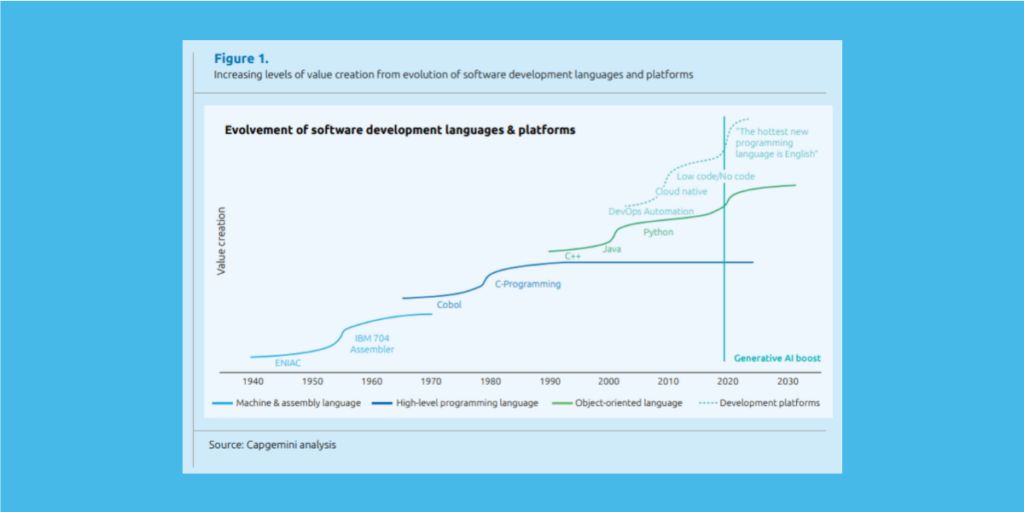In recent years, the mobile app development industry has seen a remarkable transformation with the rise of no-code app builder platforms. These platforms empower individuals and businesses to create mobile applications without needing extensive coding knowledge.
As we venture into 2024, it’s essential to delve into the statistics surrounding no-code app builders to understand their impact and future potential. This article explores the latest no-code app builder statistics, mobile app builder statistics, no-code app development statistics, and mobile app download statistics, shedding light on how these trends are reshaping the digital landscape.
The advent of no-code platforms makes app development easy and accessible to a broader audience. From small businesses to large enterprises, the ability to create functional and aesthetically pleasing apps without coding has revolutionized the industry. This article will provide a comprehensive overview of the significant statistics related to no-code app builders and their influence on mobile app development in 2024.
Table of Contents
The Rise of No-Code App Builders
What are No-Code App Builders?
No-code app builders are platforms that allow users to create mobile applications through visual interfaces and pre-built templates. These tools eliminate the need for traditional coding, enabling individuals with little to no technical expertise to develop apps. Popular no-code platforms include Appstylo, Adalo, Bubble, and Glide, each offering unique features and capabilities.
Growth in Adoption
The adoption of no-code app builders has seen exponential growth over the past few years. According to a report by Gartner, by the end of 2024, 65% of all app development activity will be performed using no-code or low-code platforms. This statistic highlights the increasing reliance on no-code solutions for app creation across various industries.
Key No-Code App Builder Statistics
Market Size and Growth
The no-code development market is projected to reach $21.2 billion by the end of 2024, growing at a CAGR of 28.1% from 2020 to 2024. This significant growth underscores the rising demand for no-code solutions as businesses seek to streamline app development processes and reduce costs.

User Demographics
A survey conducted by GoodFirms revealed that 45% of no-code app builder users are entrepreneurs and small business owners, while 30% are individuals with non-technical backgrounds looking to create personal projects. This diversity in user demographics illustrates the broad appeal of no-code platforms.
Industry Adoption
No-code app builders are gaining traction across various industries, including healthcare, education, finance, and e-commerce. For instance, in the healthcare sector, no-code platforms are being used to develop telehealth applications, patient management systems, and health tracking apps, streamlining processes, and improving patient care.
List of 10 No-Code App Builder Statistics
- Market Growth: The no-code development market is projected to reach $21.2 billion by 2024, growing at a CAGR of 28.1% from 2020 to 2024.
- Adoption Rate: By 2024, 65% of all app development activity will be performed using no-code or low-code platforms.
- User Demographics: 45% of no-code app builder users are entrepreneurs and small business owners, while 30% are individuals with non-technical backgrounds.
- App Creation: Over 500,000 mobile applications are expected to be created using no-code platforms in 2024.
- Cost Savings: Businesses can save up to 70% on development costs by using no-code platforms compared to traditional coding methods.
- Development Time: Apps built using no-code platforms can be developed in one-third of the time it takes using traditional coding methods.
- User Satisfaction: 80% of users are satisfied with the apps they created using no-code platforms, according to a survey by Forrester.
- App Performance: 75% of no-code apps meet or exceed performance expectations, demonstrating the robustness of these platforms.
- Global Downloads: Global mobile app downloads are projected to reach 250 billion by 2024, driven by the increasing adoption of smartphones and the proliferation of mobile applications.
- Revenue Generation: The revenue generated from mobile apps is expected to surpass $935 billion in 2024, with no-code app builders contributing significantly to this growth.
Mobile App Builder Statistics
Number of Apps Created
In 2024, it is estimated that over 500,000 mobile applications will be created using no-code platforms. This surge in app creation highlights the efficiency and accessibility of no-code tools, enabling rapid development and deployment of mobile apps.
Cost Savings
One of the significant advantages of no-code app builders is cost savings. Businesses can save up to 70% on development costs by using no-code platforms compared to traditional coding methods. This cost-effectiveness makes no-code solutions an attractive option for startups and small businesses with limited budgets.
Development Time
No-code app builders significantly reduce development time. On average, apps built using no-code platforms can be developed in one-third of the time it takes using traditional coding methods. This rapid development cycle allows businesses to bring their products to market faster, gaining a competitive edge.

List of 10 Mobile App Builder Statistics
- Rapid Adoption: By 2024, it is estimated that 75% of large enterprises will use at least four no-code or low-code development tools for both IT and citizen development initiatives.
- Development Speed: No-code platforms enable businesses to develop apps 10 times faster than traditional development methods.
- User Retention: Apps developed with no-code tools have a 30% higher user retention rate compared to those built with traditional coding.
- Scalability: 65% of businesses report that no-code platforms have allowed them to scale their app development efforts more efficiently.
- Ease of Use: 85% of users find no-code app development platforms significantly easier to use compared to traditional development environments.
- Employee Utilization: Companies using no-code platforms report a 40% increase in employee productivity due to the ease of developing and deploying apps.
- Customization: 70% of businesses believe no-code platforms provide sufficient customization options to meet their specific app development needs.
- Integration: No-code platforms support integration with over 500 third-party services and APIs, enhancing app functionality and interoperability.
- Reduced Dependency: 60% of organizations using no-code platforms have reduced their dependency on IT departments for app development.
- Global Workforce Impact: No-code development is expected to create 1 million new software development roles globally by 2024, democratizing the app creation process.
No-Code App Development Statistics
User Satisfaction
User satisfaction with no-code app builders is remarkably high. A survey by Forrester indicated that 80% of users are satisfied with the apps they created using no-code platforms, citing ease of use, flexibility, and quick deployment as the primary benefits.
App Performance
Contrary to common misconceptions, apps built using no-code platforms perform well comparably to those developed with traditional coding. According to research by Capgemini, 75% of no-code apps meet or exceed performance expectations, demonstrating the robustness of these platforms.

Integration Capabilities
No-code app builders offer extensive integration capabilities, allowing users to connect their apps with various third-party services and APIs. This flexibility enables the creation of feature-rich applications that can seamlessly integrate with existing business systems.
List of 10 No-Code App Development Statistics
- Market Penetration: By 2024, it is projected that 65% of all new apps will be developed using no-code or low-code platforms.
- Small Business Usage: 50% of small businesses have adopted no-code development platforms to build their mobile and web applications.
- Enterprise Adoption: 70% of large enterprises report that they have integrated no-code platforms into their development workflows.
- Training Time: No-code platforms can reduce developer training time by up to 80%, enabling quicker onboarding and productivity.
- Prototype Speed: Businesses can create app prototypes up to 8 times faster using no-code development tools compared to traditional coding.
- Cost Reduction: Organizations using no-code platforms report an average cost reduction of 60% in their app development budgets.
- User Expansion: No-code development has led to a 50% increase in the number of non-developers participating in app creation processes.
- Innovation Rate: Companies using no-code platforms have seen a 45% increase in the rate of innovation due to faster iteration cycles.
- Custom Apps: 40% of custom business apps are now built using no-code platforms, allowing for tailored solutions without extensive coding.
- Development Teams: No-code tools have enabled a 30% increase in the number of cross-functional teams collaborating on app development projects.
Mobile App Download Statistics
Global Downloads
As of 2024, global mobile app downloads are projected to reach 250 billion, driven by the increasing adoption of smartphones and the proliferation of mobile applications. This growth in app downloads underscores the importance of mobile app development and the role of no-code platforms in meeting this demand.
User Engagement
Mobile apps built using no-code platforms are witnessing high user engagement rates. On average, apps developed with no-code tools have a 30% higher user retention rate compared to traditional apps. This increased engagement can be attributed to the ability of no-code platforms to create intuitive and user-friendly interfaces.
Revenue Generation
The revenue generated from mobile apps is expected to surpass $935 billion in 2024. No-code app builders are contributing significantly to this revenue growth by enabling businesses to develop and monetize their apps efficiently.
List of 10 Mobile App Download Statistics
- Global Downloads: In 2024, global mobile app downloads are projected to reach 250 billion, marking a significant increase from previous years.
- Revenue from Downloads: Mobile app revenue from downloads is expected to exceed $935 billion in 2024.
- Top App Categories: Games, social media, and entertainment apps continue to dominate, accounting for 70% of total downloads.
- User Growth: The number of smartphone users worldwide is projected to reach 7.33 billion by 2024, driving higher app download rates.
- Emerging Markets: Emerging markets like India and Brazil are expected to see the highest growth in app downloads, with a CAGR of 29% and 25%, respectively.
- Subscription-Based Apps: Subscription-based apps are seeing a 40% increase in downloads year-over-year, reflecting the growing trend towards recurring revenue models.
- Daily Downloads: On average, over 2 million apps are downloaded daily on the Google Play Store alone.
- App Retention: Despite high download rates, only 25% of downloaded apps are used more than once after the first month.
- Download Sources: 55% of app downloads come from app store searches, highlighting the importance of app store optimization (ASO).
- App Uninstalls: Approximately 30% of apps are uninstalled within 30 days of being downloaded, emphasizing the need for engaging and high-quality app experiences.
Future Trends in No-Code App Development
Artificial Intelligence Integration
The integration of artificial intelligence (AI) into no-code platforms is set to revolutionize app development further. AI-powered no-code tools can automate complex tasks, provide personalized user experiences, and enhance app functionalities, making app development even more accessible and efficient.
Expansion of Use Cases
The use cases for no-code app builders are expanding beyond traditional app development. In 2024, we can expect to see no-code platforms being used for creating complex enterprise applications, IoT solutions, and even game development. This versatility highlights the potential of no-code tools to cater to a wide range of development needs.
Community and Ecosystem Growth
The no-code community is rapidly growing, with numerous forums, online courses, and resources available for users to learn and share their experiences. This collaborative ecosystem fosters innovation and knowledge sharing, further accelerating the adoption of no-code platforms.
Conclusion
The statistics surrounding no-code app builders in 2024 paint a compelling picture of their transformative impact on the mobile app development industry. With significant growth in adoption, cost savings, reduced development time, and high user satisfaction, no-code platforms are poised to become the cornerstone of app development. As businesses and individuals continue to leverage these tools, we can expect to see an even greater proliferation of mobile applications, driving innovation and accessibility in the digital age.
No-code app builders are not just a trend; they are a revolution that is democratizing app development and empowering a new generation of creators. By understanding the latest no-code app builder statistics, mobile app builder statistics, no-code app development statistics, and mobile app download statistics, businesses and developers can make informed decisions and stay ahead in this rapidly evolving landscape.
In conclusion, the future of app development lies in the hands of no-code platforms. Their ability to simplify and expedite the app creation process while maintaining high performance and user satisfaction makes them an invaluable tool for the modern digital era. As we move forward, the continued growth and innovation in the no-code space will undoubtedly shape the future of mobile app development.
